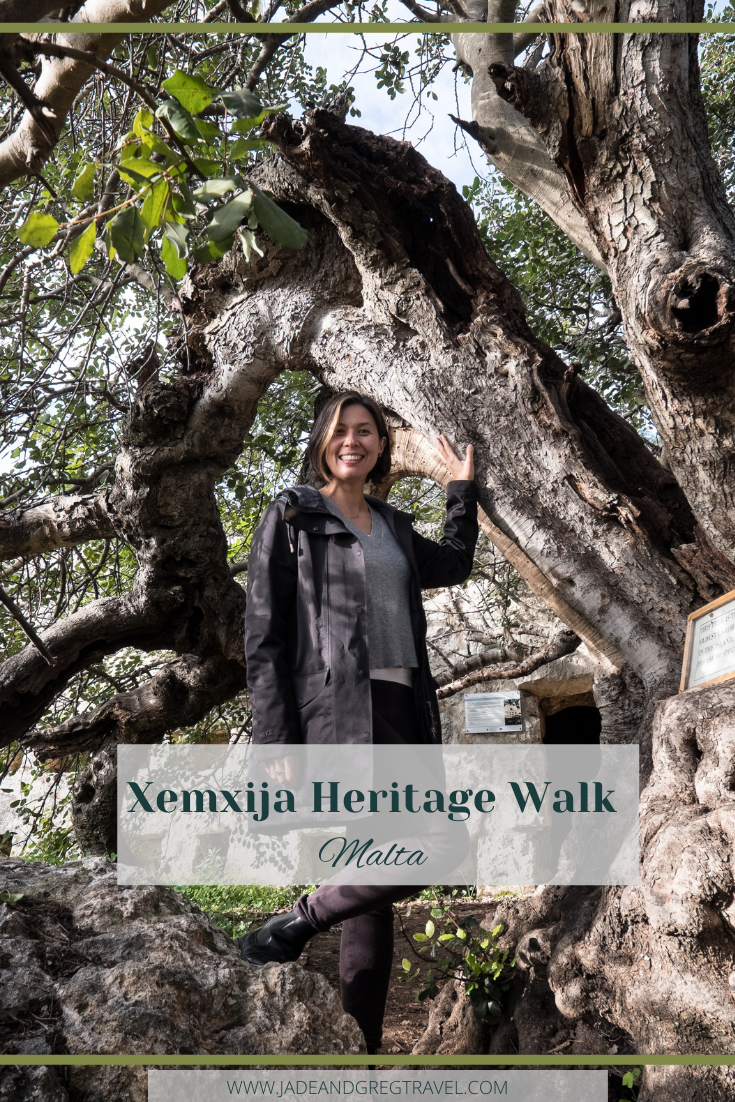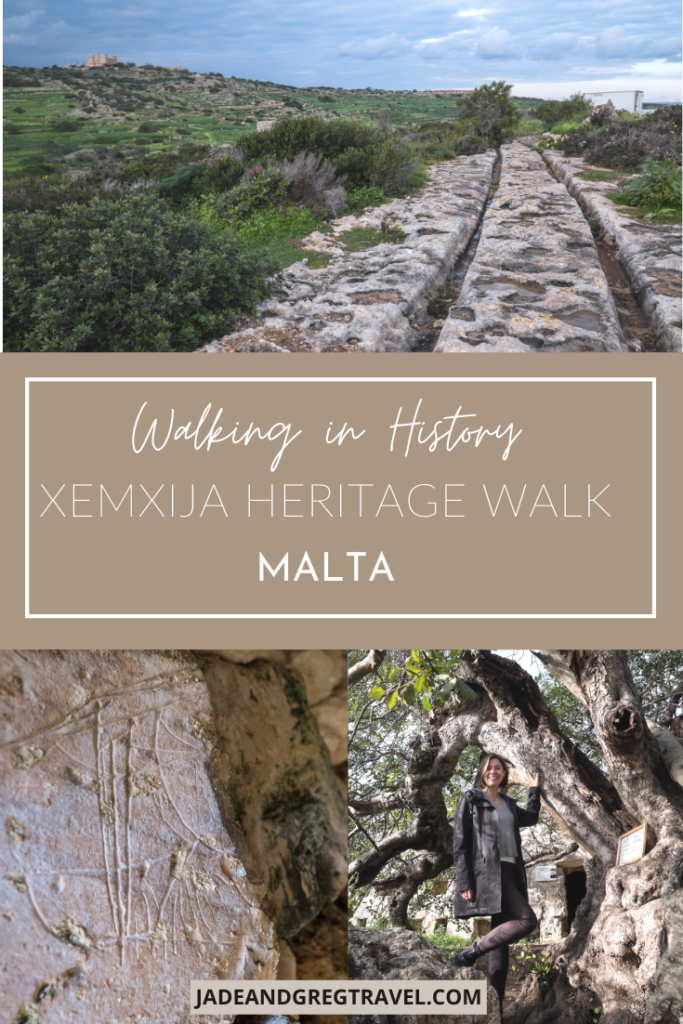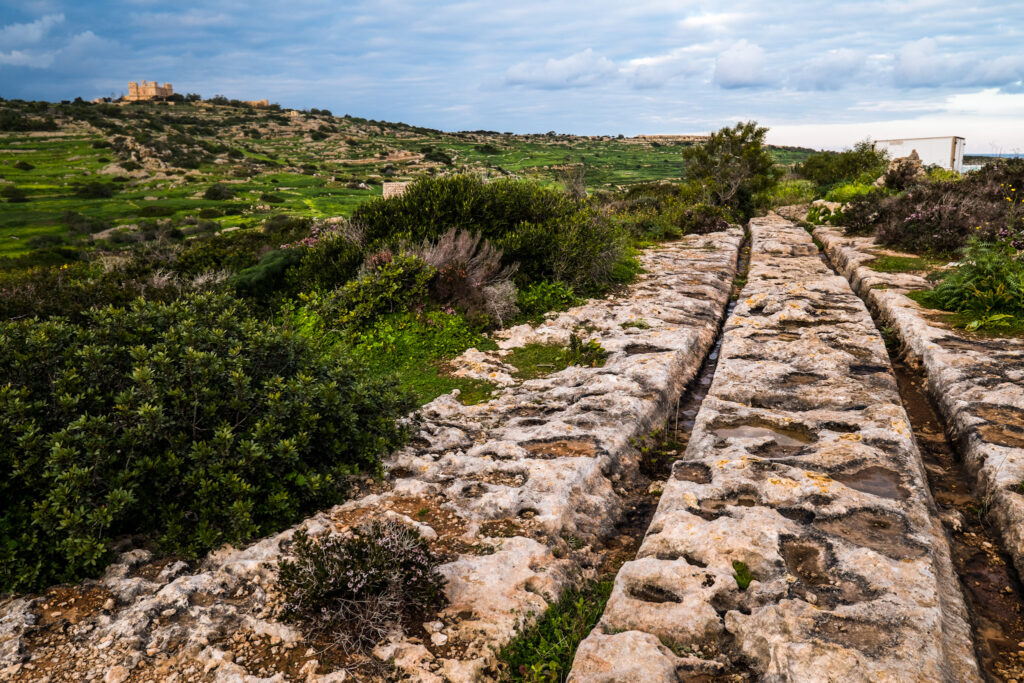Walk in the footsteps of the ancients at Xemxija Heritage walk
If you do one walk in Malta, make it this one – Xemxija Heritage Walk.
Follow in the footsteps of Romans, Phoenicians and even Neolithic ancestors as you tread the ancient paths past villages, farms and even ancient burial spots. Experience ancient historic sites totally free with gorgeous views.
And best of all as its not on any tourist sites, you’ll probably have it all to yourself.
The local Xemxija Heritage group has created signs to help you, but we found many were missing or behind overgrown bushes. I’ve included a map below to help you navigate!
It is a lovely afternoon walk full of interesting points and we’ve put together this interpretive guide for you too.
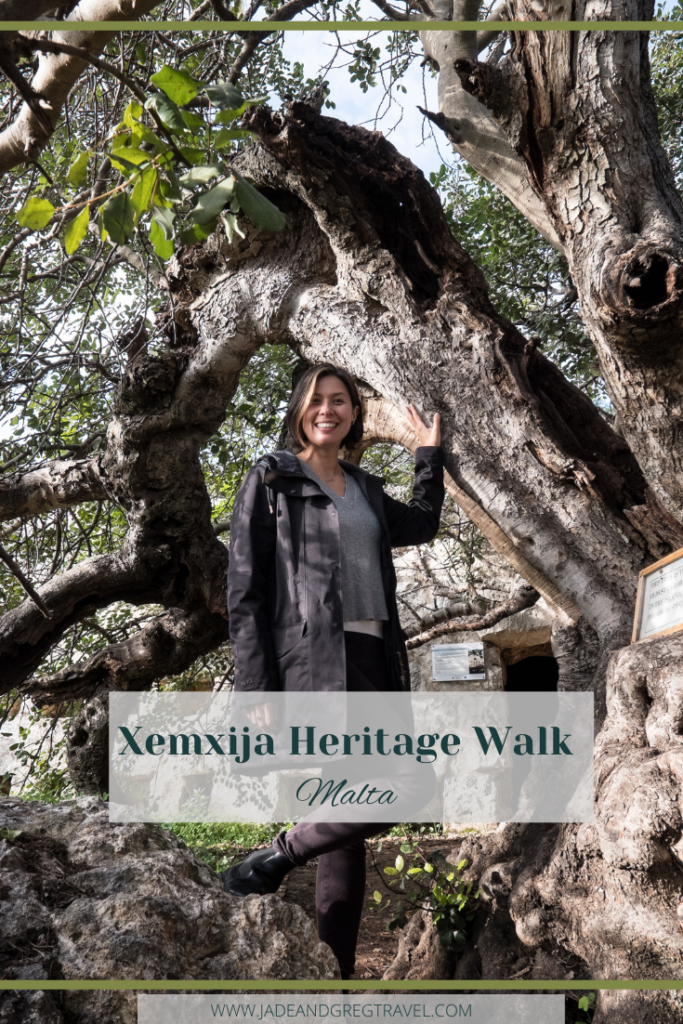
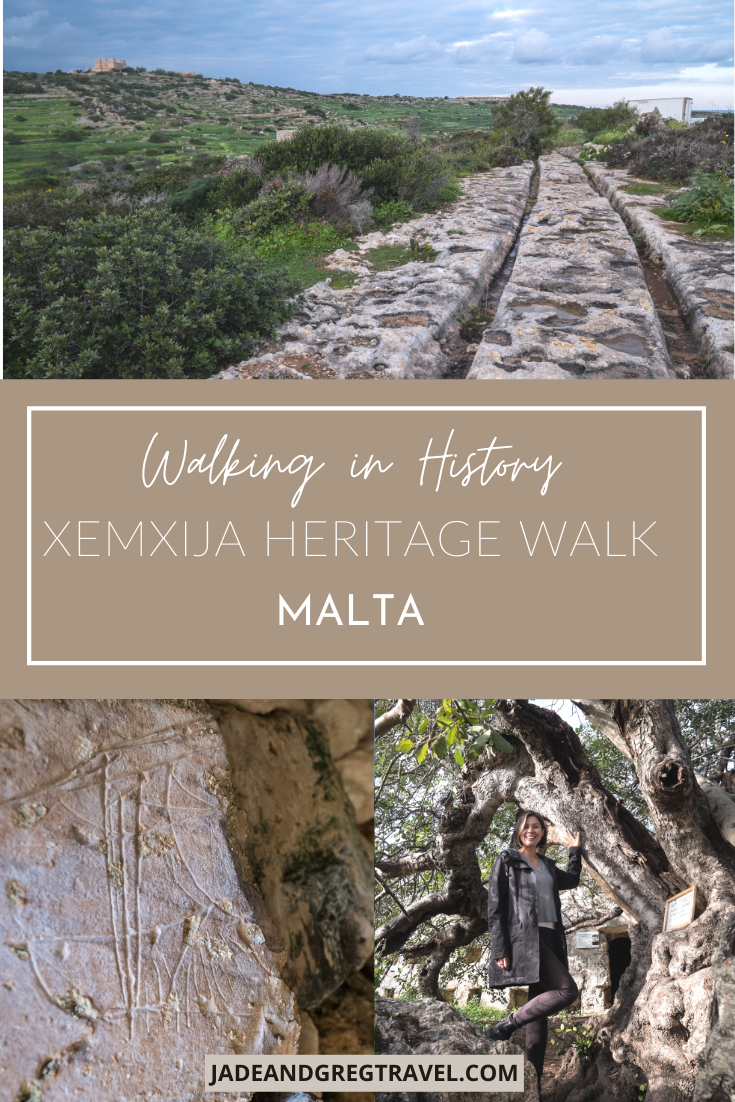
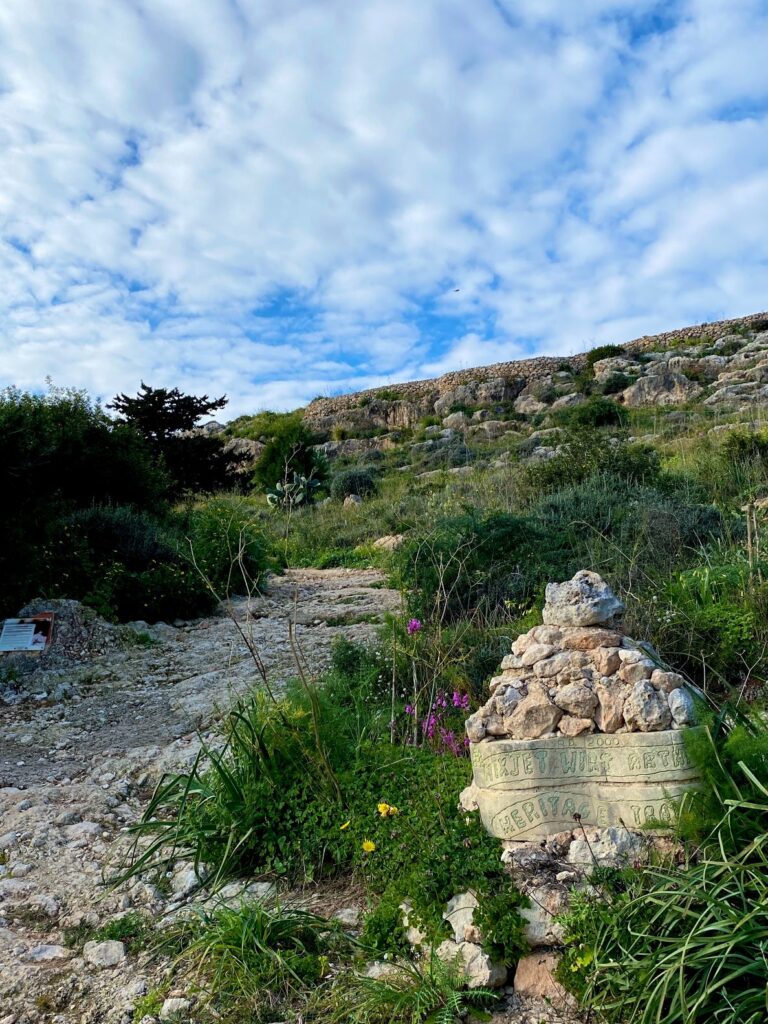
Pack: water, victuals to nibble, or even a full picnic!
Time: 45min-1.5hrs (latter if you take it slow and take lots of photos!)
Best time to go: afternoon so you can get a lovely sunset!
Grade: Easy! but a bit of bush bashing so cover your legs as there are a few stinging nettles.
Parking: There are parks behind the Porto Azzuro hotel and along the street.
Lets begin!
As you walk uphill notice the width of the Roman path and the grooves in the rocks underfoot, made so the donkey carts could easily manoeuvre the carts and not lose their footing in the rain.
As you ascend keep an eye out on the right for a small opening in the stone wall. There is a small sign just beyond on the rock beyond for The Galley Cave
The Galley Cave


On the right doorway inside of this cave you can see small graffiti of a ship and oars with a pilgrim’s cross.
Possibly an ‘ex voto’; an offering of thanksgiving by a sailor or traveller who was saved from pirates, shipwreck or other disaster. The cave served as a dwelling, although it was probably a tomb originally.
Back out to the main road and on the next terrace you’ll see a small sign on the right for the Roman apiary.
Punic and Roman Apiary
These are the old Roman and Phoenician apiaries that local farmers still sometimes use, you can also go inside.
Have a rest and admire the view from the little bench.
Then….time to head upwards on the right you will see some overgrown stairs – head up!

Collapsed Shepherds Cave / Burial chamber?
As you near the top of the stairs a small pathway overgrown on your right. Follow it to a partially collapsed cave where once shepherds stayed with their animals. You can go inside around the rocks in front and it is huge!

Neolithic Burial Cave
At the top of the stairs across the road, you come to the Burial Cave as used in Neolithic times.

The Oldest Carob Tree
To your left there are tiny steps leading under some heavy branches of the oldest Carob tree in the island. Estimated to be over 1000 years old, its flowers attract the bees and other insects. On the wall below is a little poem to the tree.
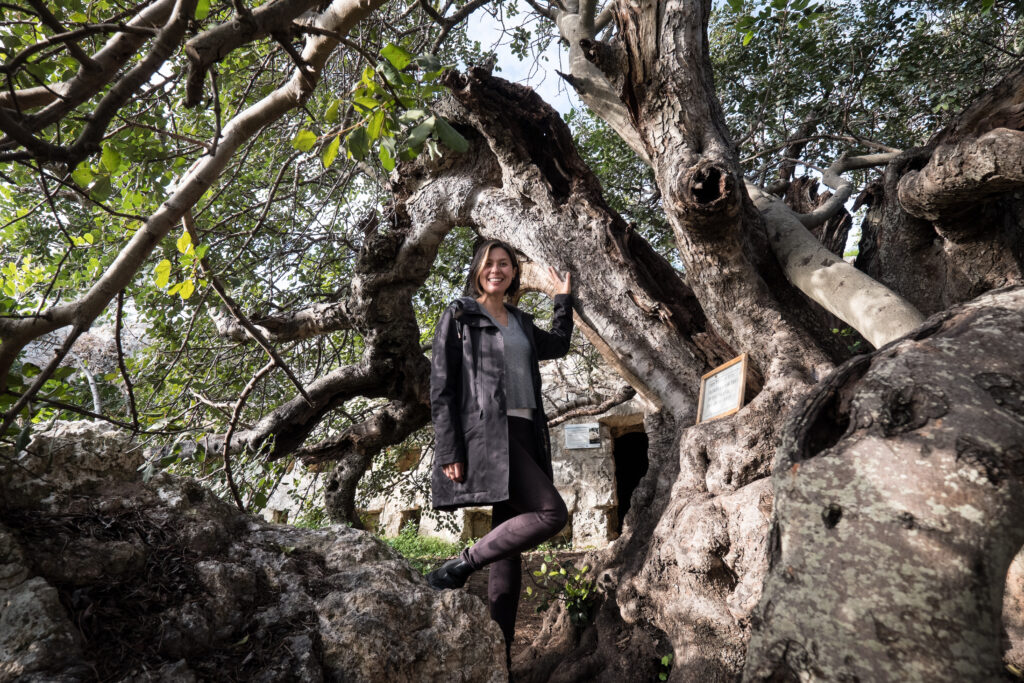
This apiary is made by a local farmer and is modern. Its great to see the honey pots still inside.
To your left is a little path leading to Ghar Berbah another cave shelter for local farmers.
Pilgrim Crosses
Back on the Roman Road, keep walking onwards and upwards. As you get higher keep an eye on the wall to your left and you’ll see some Christian crosses carved into the rock by pilgrims. The alternative name was the Pilgrim’s Way because pilgrims walked along this road to reach The Sanctuary of Our Lady of Mellieha.
This was a popular route for trading, and even salt sellers from Gozo travelled this road in ancient times.

At the top you will be greeted with a fantastic view and wildflowers.


Keep following it up and soon you’ll see a sign for Prehistoric (Neolithic) temple on the left, and the Punic tombs on the right.

Neolithic Temple rubble
It was really hard to find the Neolithic temple, as farmers are constantly ploughing the fields. Its more for hard core history fans – see below for what is left. Note: I’ve left it off our map.

Go back to the last sign if you deviated and head right to the Punic Tomb.
Go uphill slightly till you spot a pile of rocks with a sign.

Punic tomb
Follow the arrow (left) and enter a small enclosed area. The info board is behind you. This Punic tomb (Phoenician period) is a beautifully carved shaft that leads to a grave chamber.
Sadly I didn’t go down it was 2m below ground level and I probably wouldn’t have gotten back out! (Greg probably would have just laughted at me!).

Head up the path behind the tomb or you can go back to the sign on the rocks and head up, both paths lead to a small farmers rock hut.
Traditional Farmers Hut
It has been built in the traditional style with no mortar just carefully balanced rocks. It has all the traditional maltese styles an outside stone bench (xriek), a water duct (mizieb), an alcove, an oil lamp niche and an outside staircase. Imagine sitting up here, watching your sheep and overlooking the beautiful view- what a pleasant way to spend the afternoon.
Cave Dwellings
Behind the hut are two cave dwellings. Apparently they were inhabited in recent times (see info board).
I love that whomever wrote these boards can still remember living in one of these caves and how the it was cool in summer and warm in winter. Taking a walk inside I was surprised at how warm it was despite the cold winds outside. Not sure if I would live there though!
Head up the stairs….
Soon you’ll see an arrow pointing to the right….
Then up ahead…


Ancient Granary
Up on the cliffs is an ancient granary for the inhabitants, possibly Neolithic in origin. Since then it has been used as a granary but also as a well collecting rainwater.

From there a small sign points to the left, then keep walking towards the buildings in the distance and soon you’ll see another rock pile and sign that is sadly obscured by mould.
These are the ancient burial caves for Neolithic people that were re-used by Phoenicians later on. Watch your step there are quite a few of them around.

From there make your way to the little road and turn left. Pass by some lovely little gardens and local dogs & children playing.
As you reach the end of the road there is a sign continuing the Heritage trail going down some stairs.
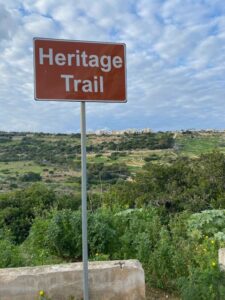
Now go down the stairs and keep walking till you hit a large path, then turn right onto it. You want to keep walking with the apartment buildings on your right.
Enjoy the walk with some magnificent sunset views of the castle on the opposite valley
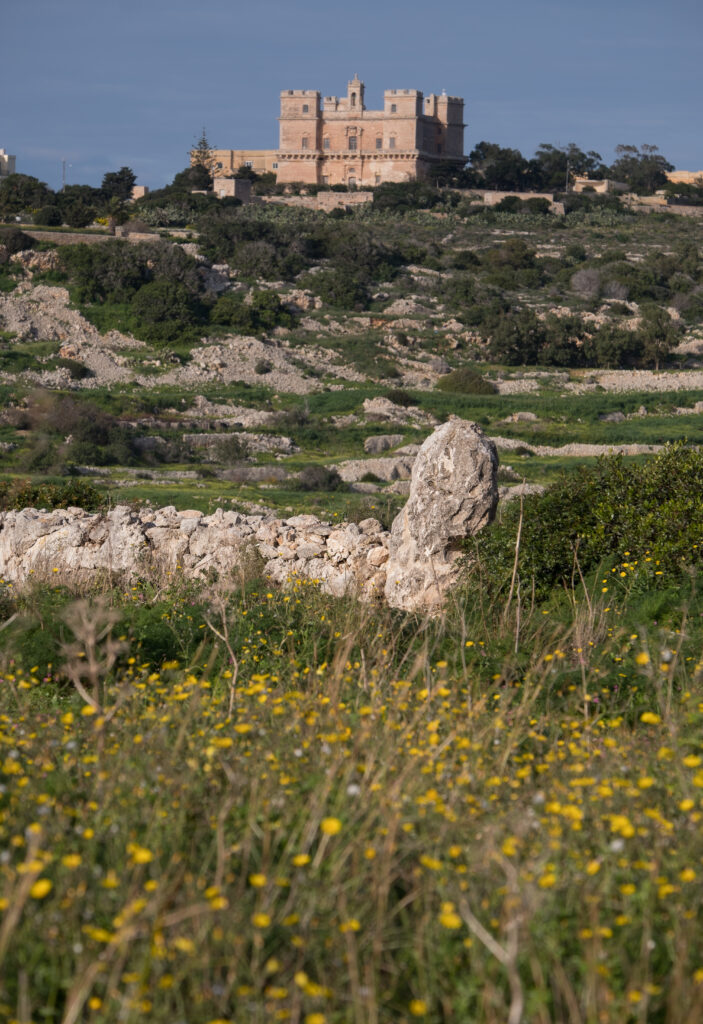
Soon you’ll see a small concrete and rock hut.

Just before you reach the small hut, is a tiny path leading to the right.
Take this path and go up towards the white apartment building. Just before you hit the road there is a path on your right leading to the amazing ancient and mysterious cart ruts.
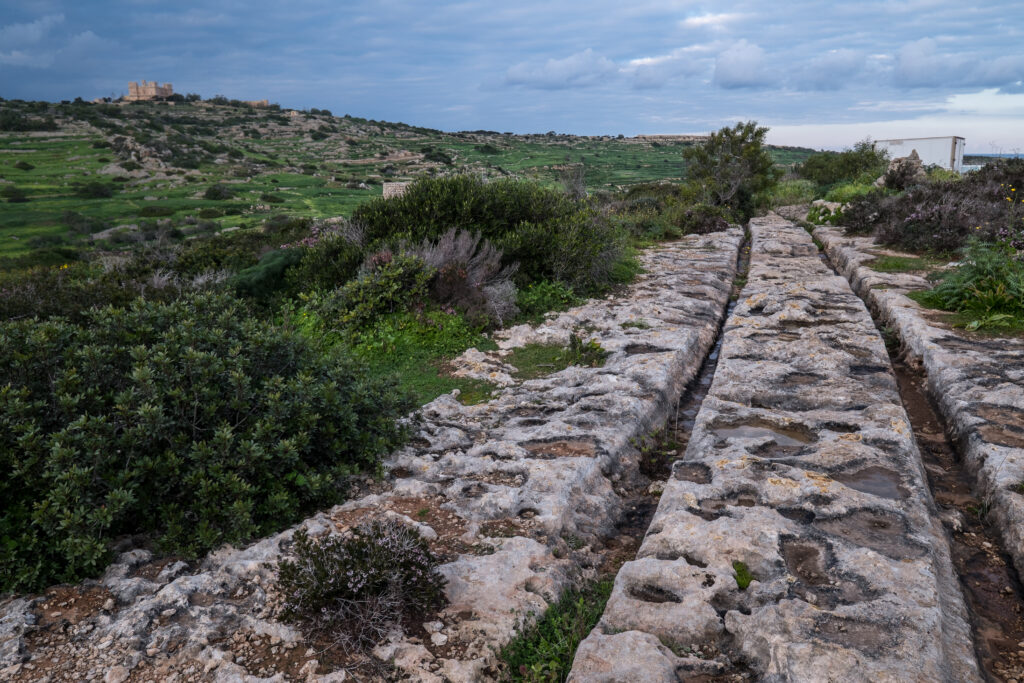
The leading expert on these is Dr David Trump who has published several books on the subject. He calls the cart ruts “one of the most intriguing problems in Maltese archaeology”.
He believes that the ruts were worn by heavy carts or sledges, moving tons of stone miles across the landscape. However, the tracks continue up steep slopes, across deep fissures and chasms, and to sheer cliff faces.
We aren’t sure who carved them, or what they were for and why they cross huge parts of the island and suddenly disappear?
Many have linked them back to the mysterious culture who built the megalithic temples in Malta. The Temple Builders appeared 7,000 years ago built these amazing temples and suddenly disappeared around 3000 BCE…..
Go back to the main path and walk past the stone hut.
There you’ll find another heritage sign pointing to the left to the Roman baths, follow the path and down the stairs.

These amazing Roman baths are built into the side of the cliff.
Not only is the view lovely but inside you can find the frigidarium, tepidarium, drainage carvings and other alcoves for Roman statues. It’s pretty cool and makes you feel like Indiana Jones!
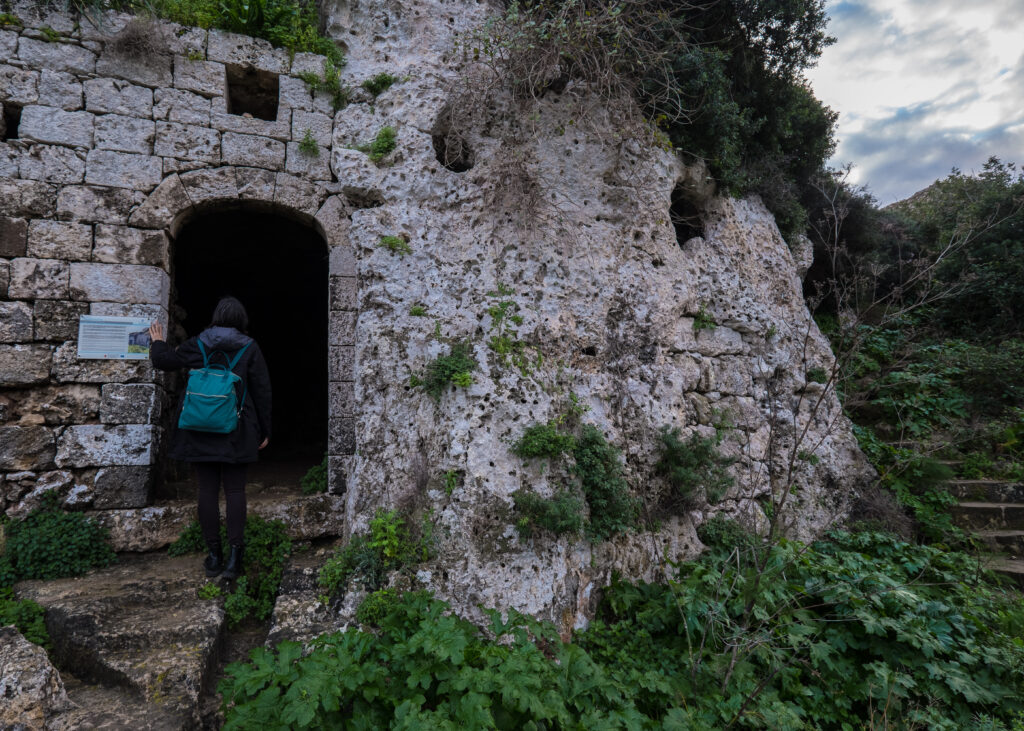
Now you can retrace your steps back to the car enjoying the sunset.
Enjoy this little slice of Maltese history!
If you liked this post please pin this blog for others to read and do let us know what you liked about Xemxija Heritage Walk.
